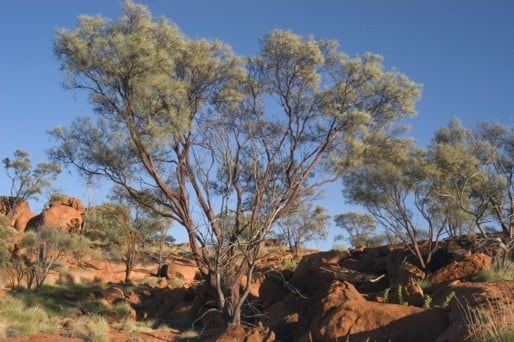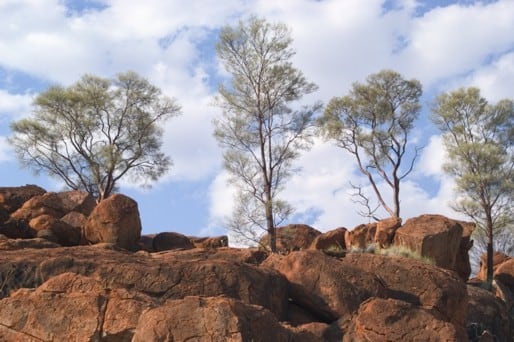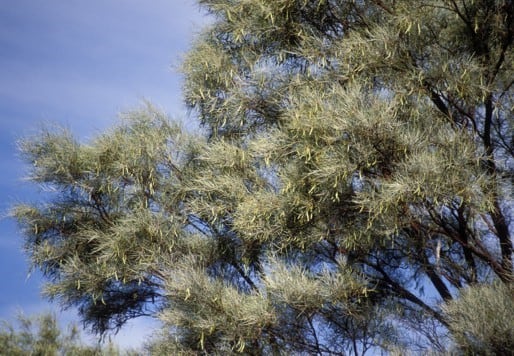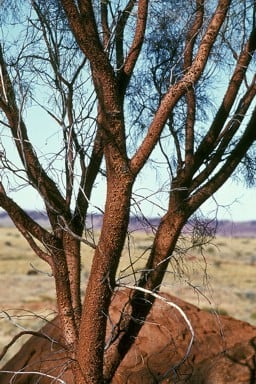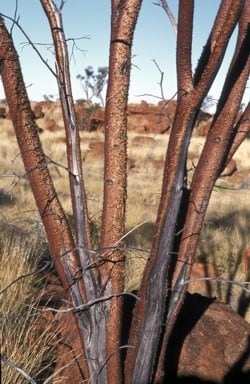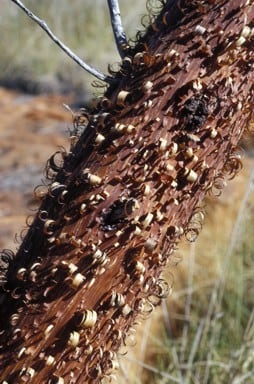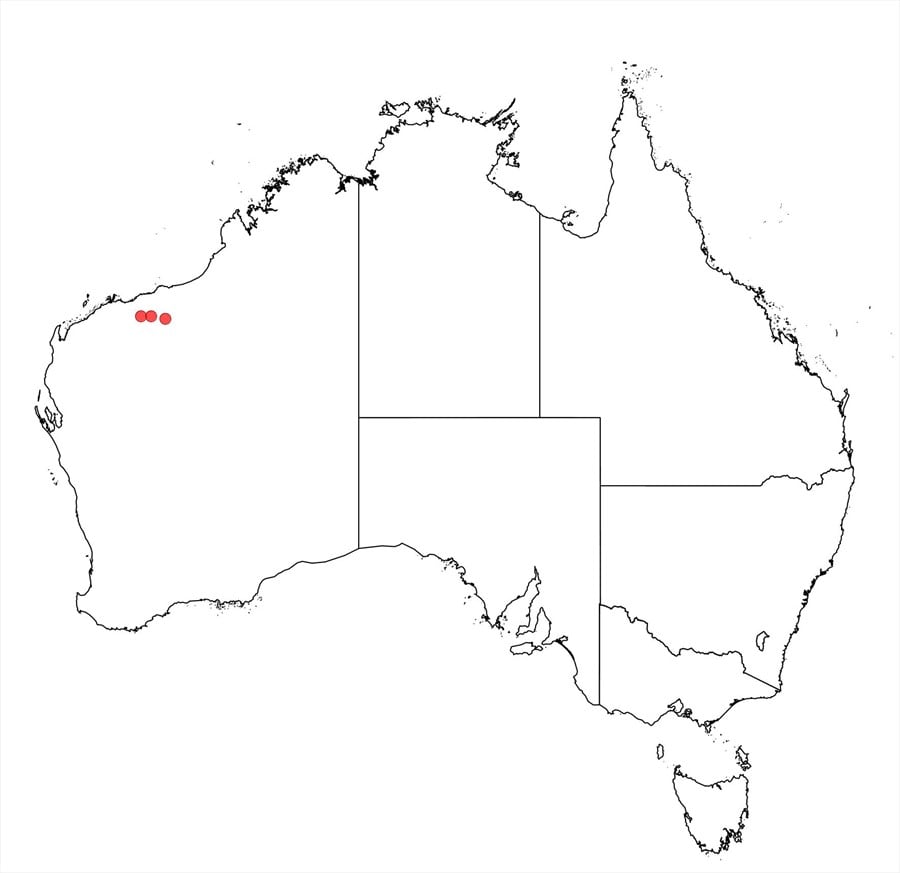Acacia leeuweniana Maslin
WATTLE
Acacias of Australia
Common Name
Leeuwen’s Wattle
Family
Fabaceae
Distribution
Restricted to the Pilbara region in north-western W.A. where known from only two sites, SW of Marble Bar and S of Port Hedland.
Description
Shapely, obconic tree 4–8 (–14) m high, adolescent plants often with a conifer-like appearance. Bark ‘Minni Ritchi’, brownish red, a short, grey stocking at base of oldest stems. Branchlets not pendulous, brittle, glabrous. Phyllodes linear, ±straight, not especially rigid, flat (except terete on juvenile plants), (4–) 7–12 (–15) cm long, 1–2 (–2.5) mm wide, pungent or sub-pungent, glabrous or sometimes subglabrous, green to dull grey-green or sub-glaucous; very finely multistriate with nerves close together; gland 1, ±basal. Inflorescences simple, 2–6 per axil; peduncles 5–10 mm long, glabrous or ±sericeous; spikes 1–2 cm long (dry), subdense, light golden. Flowers 5-merous; calyx c. 1/2 length of corolla, shortly dissected into broadly triangular lobes. Pods broadly linear, flat, normally shallowly curved, 3–10 cm long, 6–8 mm wide, coriaceous-crustaceous to ±sub-woody, glabrous, resinous. Seeds longitudinal, oblong or sometimes oblong-elliptic, flattened, 7–11 mm long, brown tinged greyish; areole small, c. 1 mm long.
Phenology
Flowers Apr., May and Oct., possibly in response to timing and intensity of rainfall.
Habitat
Grows in skeletal soil on granite outcrops.
Specimens
W.A.: SW of Marble Bar [precise localities withheld for conservation reasons], J.S.Beard 4627 (PERTH), B.R.Maslin 8490 (AD, CANB, DNA, PERTH) and L.Thomson LXT 1160 (PERTH); S of Port Hedland, B.R.Maslin 8492 (CANB, MEL, NSW, PERTH) and S.van Leeuwen 5247 (K, MEL, NSW, PERTH).
Notes
Most closely related to the widespread A. cyperophylla which comprises two varieties, with only one (var. omearana) occurring in the Pilbara region. Acacia cyperophylla differs from A. leeuweniana most readily in its normally terete phyllodes and habitat preference for growing along watercourses; var. omearana further distinguished by its pendulous branchlets and phyllodes, see B.R.Maslin, Nuytsia 18: 157 (2008) 157 for further discussion. More distantly related to A. rhodophloia which differs in its generally lower stature, shorter, broader phyllodes and narrower pods.
FOA Reference
Flora of Australia Project
Author
B.R.Maslin, J.Reid
This identification key and fact sheets are available as a mobile application:
URL: https://apps.lucidcentral.org/wattle/
© Copyright 2018. All rights reserved.
